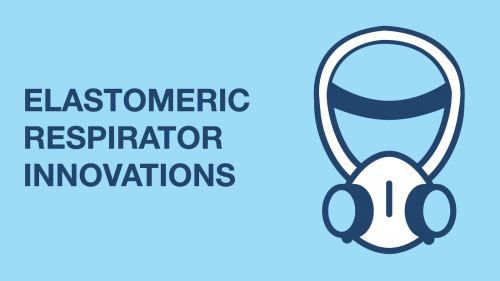Elastomeric Respirator Innovations Play a Critical Role in Response to COVID-19

By: Suzanne Schwartz, M.D., M.B.A., Director, Office of Strategic Partnerships and Technology Innovation, Center for Devices and Radiological Health
Since the COVID-19 public health emergency was declared over a year ago, access to personal protective equipment (PPE), for health care personnel has been a significant challenge. In particular, the supply chain for respirators, which are regulated by the U.S. Food and Drug Administration when they meet the definition of a device, has been heavily stressed as health care personnel and health systems have fought to secure these critical devices. The respirator type most commonly used in a health care setting is the disposable, N95 filtering facepiece respirator (FFR), which is designed to achieve a very close facial fit and provide efficient filtration of airborne particles.
Elastomeric respirators, which provide similar protection to other FFRs and are also approved by U.S. Centers for Disease Control and Prevention’s (CDC) National Institute for Occupational Safety and Health (NIOSH), may also be used in health care settings. Given that elastomeric respirators are designed to be reusable, they can help to protect health care personnel in our hospitals and doctor’s offices in times of reduced disposable N95 supply. In particular, this type of respirator can play a critical role in the nation’s response to COVID-19 and bolster future readiness for similar outbreaks and public health emergencies.
A major obstacle limiting the wider use of reusable respirators in health care settings has been the inclusion of exhalation valves as a design feature, which means the respirator cannot provide source control. Source control helps to prevent the transmission of infection through a person’s respiratory secretions, which are produced when speaking, coughing, or sneezing. This limits their practical use with viral agents like SARS-CoV-2, and because the exhaled air from such respirators potentially compromises the sterile field, these devices cannot be used in an operating room. Solving these challenges has not been easy, but, working together, health care personnel, device manufacturers, and scientists have created a new path forward.
Specifically, CDC NIOSH has worked interactively with industry to recently approve first-of-its-kind elastomeric respirators without an exhalation valve by Mine Safety Appliances (MSA) Safety incorporated and elastomeric respirator configurations with an exhalation valve cover from the company 3M. NIOSH also just approved the Dentec Safety Specialists half mask respirator without an exhalation valve. By addressing respiratory protection and source control needs, elastomeric respirators can provide the solutions our health care personnel need to stay safe while saving lives. Though they require higher costs up front because they are reusable, they can provide a cost-effective approach in the long-term to disposable N95 FFRs.
These innovative designs for reusable respirators intended for use in health care settings address current design needs, are authorized for use during the public health emergency through the FDA’s umbrella emergency use authorization (EUA) for NIOSH-Approved Air Purifying Respirators for Use in Health Care Settings During Response to the COVID-19 Public Health Emergency once they are approved by NIOSH and listed on the NIOSH Certified Equipment list (CEL) for non-powered air purifying respirators with particulate protection, and may have far-reaching benefits as we refine the nation’s responses to public health crises in the future.
The FDA, in conjunction with CDC NIOSH, will continue to encourage innovation that helps make available critical respiratory protective technologies to address the needs of our health care personnel.
For regular updates on CDRH’s efforts and the FDA’s COVID-19 response, please visit: www.fda.gov/medical-devices.

